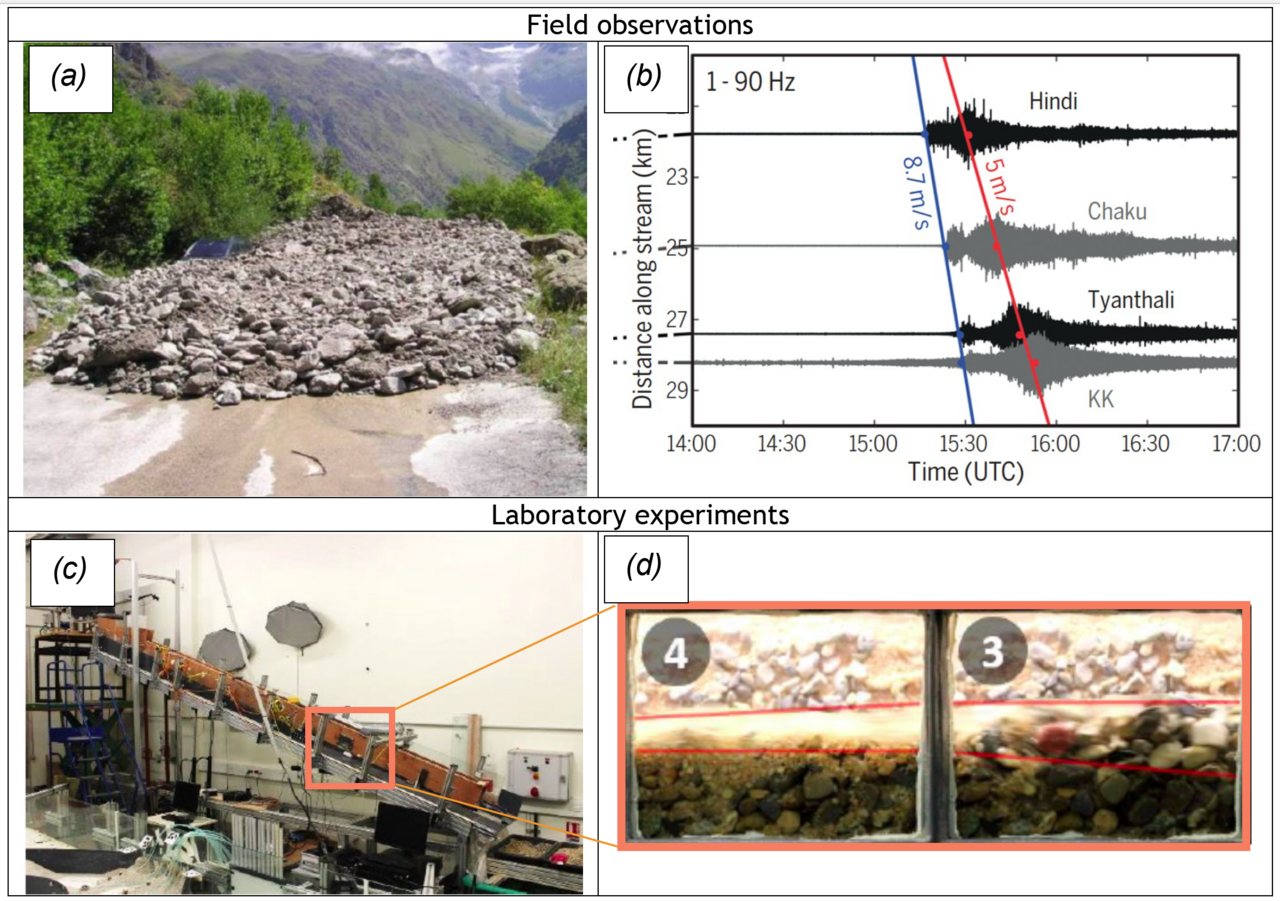ESR08: Understanding the seismic signature of extreme river and debris floods
The pace at which rivers erode the Earth’s crust and create dramatic landscapes (e.g. valleys and canyons) is largely set by extreme floods (e.g. Cook et al., 2018). These extreme floods are expected to be more frequent and stronger under the rapidly warming climate, which will enhance hazards for populations (e.g. Chmiel et al., 2022). To anticipate those changes and mitigate hazards, it is pressing to develop innovative observational frameworks capable of resolving and monitoring the physics behind extreme floods. This project aims at doing so using seismic observations.
The conveyance of water and sediments (e.g. Figure 1(a)) exerts force fluctuations on the Earth’s surface, which generate significant ground motion that can be detected remotely by seismometers placed meters to a few kilometers away (e.g. Figure 1(b)). Burtin et al. (2008) showed this for the first time from seismic observations along the Trisuli River in the Himalaya. Since then, a wealth of theoretical (Tsai et al., 2012; Gimbert et al., 2014; Farin et al., 2019; Zhang et al., 2020), laboratory (Gimbert et al., 2018, Allstadt et al., 2020; Piantini et al., 2021) and field (Bakker et al., 2020; Lagarde et al., 2021; Zhang et al., 2021) studies have been devoted to the understanding and description of the primary mechanisms controlling the amplitude and frequency response of the generated seismic signal, in an attempt to link seismic signal properties back to flow characteristics. Although a relatively good consensus has been found under moderate flow conditions with relatively low concentration sediment flows (e.g. Bakker et al., 2020), many open questions remain about extreme floods, which exhibit a much more complex physics associated with grain-grain interactions, grain sorting, changes in flow rheology, etc… (Figure 1(d)).
This Ph.D. project aims at deciphering and describing such physics and its links with the seismic signal under a wide range of flood conditions, from rivers with moderate slopes to debris flows occurring on much steeper slopes. We will consider both field observations and laboratory experiments. Field observations will be conducted along French, Swiss, Himalayan and potentially Taiwanese rivers. Laboratory experiments will be conducted in Grenoble using existing facilities (Figure 1(c)), in which we will target specific physics using dedicated laboratory measurements such as in-situ force sensor, image correlation and potentially grain-embedded accelerometer measurements. Ultimately, we will gather our observational and experimental findings into a generalized seismo-mechanical theoretical framework capable of reproducing the main physical behaviors. These advances will provide the grounds for establishing seismology as a state-of-the-art monitoring tool to improve our knowledge on the physics of extreme floods around the globe.
Keywords: mechanics, signal processing, field work, laboratory experiments, theoretical modelling, rivers, floods
Host institute: Université de Grenoble, Laboratoire IGE, France
Supervisor: Florent Gimbert (IGE)
Secondement: Jens Turowski (GFZ Potsdam)
Collaborations: Alain Recking (IGE), Kristen Cook (ISTerre) and other institutions participating in the EnvSeis project.


